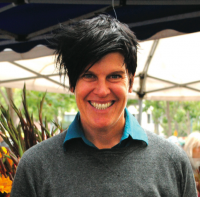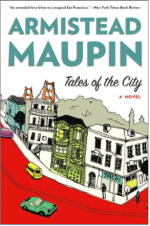
Earlier this year, Marcy Coburn started work as Executive Director of CUESA (Center for Urban Education about Sustainable Agriculture), an organization best know for running the Ferry Plaza Farmers Markets three times a week at the Ferry Building. “My whole relationship to food and cooking has been shaped by my love for farmers markets,” she explains. “I’m motivated by not only the impact I can personally have in transforming the food system by shopping at the farmers market, but also by how much I cherish the experience of going to the market. It makes me so happy to see all the other food lovers out shopping but also I am thrilled and inspired by the smells, the sights and the energy of the farmers market.”
We spoke with Coburn about some of the ways CUESA and the Bay Area are leading the way in cultivating healthy food systems.
MC: The Bay Area is leading the national conversation on food and agriculture. California farms grow nearly half of all of the food consumed in the entire country. Many of the small-scale fruit, nut and vegetable crop growers and small-scale ranchers are selling those products in farmers markets in the Bay Area. This means is that the buying habits, tastes, and preferences of the Bay Area farmers market shoppers are able to influence the crops that are grown and growing practices that are used on the foods that are feeding the entire nation. A good example of this is certified organic farming. Decades ago activists in the Bay Area proved that there was demand for food grown using certified organic production methods and we have seen that demand grow every year since.
This also means the Bay Area has a responsibility to the rest of the country to be a source of inspiration and innovation in cultivating a healthy food system. It is not only important that we engage in conversations about the food system and how to improve it, but also work on policies that provide access to fruits and vegetables for everyone and create new opportunities so that non-industrial farmers and food producers can be successful.
What are some of the easiest things the average person can do to impact healthy food systems?
Buy raw ingredients from farmers markets and cook at home, a lot.
How did you first get interested in cities?
Studying urban geography in college I became fascinated with the concept of cities in Europe that formed around the agricultural center of town and / or communal bread oven. Crops were harvested and sold in the central market and then the communal bread oven was lit and people brought their raw bread loaves to be baked. Once the bread was done and the temperature was lower, in went the meats, and finally the vegetables. All streets of the city converged on the townsquare or central market where important issues were discussed, food was shared, supplies were gathered, commerce and trade occurred, and everyone contributed something to the mix. In many ways, for me this describes the ideal modern day farmers market.
What is your favorite city?
San Francisco.
Favorite urban view?
I grew up in the Central Valley and when I was a teenager in the sweltering heat of summer, I would pack as many friends as I could into my car and we would drive to San Francisco to escape the heat. The feeling of rolling down the windows on the Bay Bridge and letting in all of that exquisitely, cool, foggy air was pure ecstasy. My favorite urban view is the view of San Francisco coming over the Bay Bridge. Soundtrack was Journey’s “When the Lights Go Down in the City.”

Favorite book about cities?
I love Armistead Maupin’s Tales of the City series, a lovely fictional narrative of the gay community of San Francisco in the 1970s, and a great perspective on San Francisco during that time.
And your favorite fruit or vegetable?
Currently my favorite fruit is the Blenheim apricot. I ate about ten just today.
